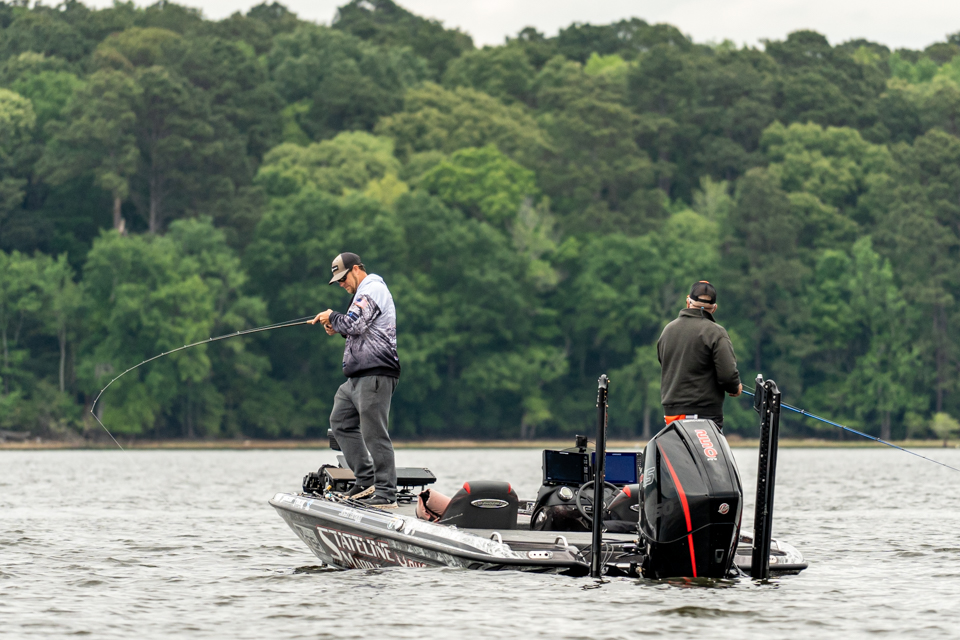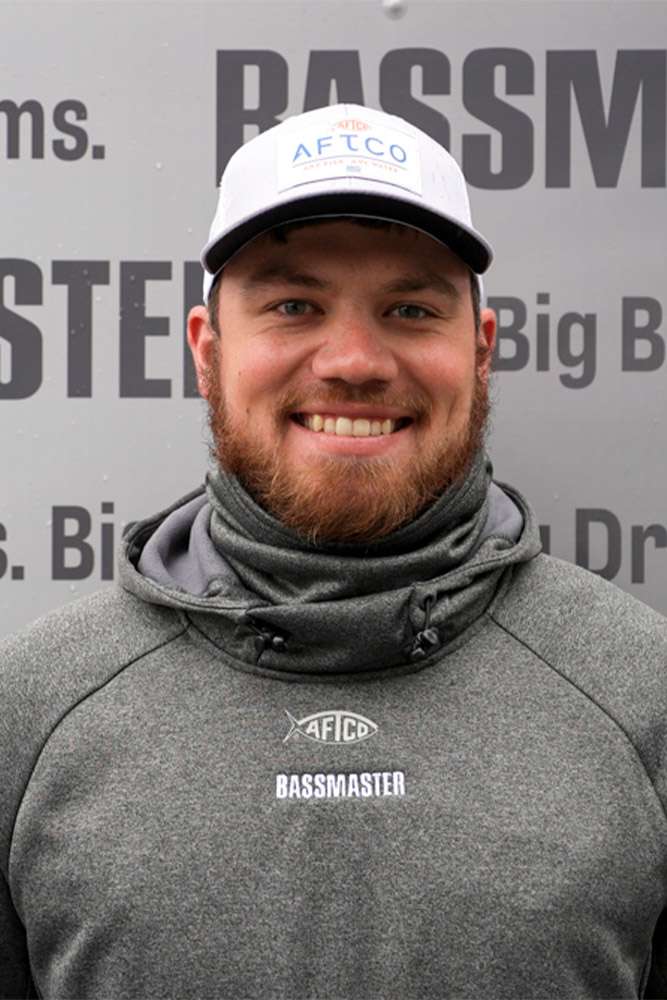
Many anglers on Toledo Bend this week have dedicated their time to fishing offshore. But offshore on this famed fishery doesn’t necessarily mean anglers are doing the exact same thing, nor does it mean deep for many of the pro anglers.
In fact, there are several different offshore patterns playing out on the famed reservoir this week. There are prespawners, postspawners and even some spawners offshore and if they were lucky enough to find some grass, anglers have reported seeing shad spawns.
On Day 1, several of the pros who landed inside the Top 20 used their forward-facing sonar to focus on individual bass on mid-depth flats. Not all, but some of those individual bass may be spawning on those flats.
Keith Tuma, who ended his day in second-place with 27-14 total, believes several of the bass he caught in 12 to 14 feet of water were spawning on hard bottom areas. He was able to see those bass using his Garmin LiveScope and he hooked each one inside the mouth.
“I don’t know if I can duplicate it, but I am going to try. I’ll have a long day,” he said. “It got tougher in the afternoon, but I also had left that key area.”
Canadian pro Jamie Bruce has also spent time offshore looking at his LiveScope. Bruce thought he could use some Canadian tricks on Toledo Bend after watching his buddy Jeff Gustafson win the Bassmaster Classic with the “moping” technique they use so often up north.
He also spent a day on Rayburn catching big largemouth with the Smeltinator jighead Gussy has now made famous before arriving on Toledo Bend.
While “moping” hasn’t been productive, Bruce broke out the baitcasters and used them to catch 20-13, which has him tied for 10th-place. He has been using his trolling motor to navigate flats in 10 to 12 feet of water. It’s deeper than he would have guessed bedding largemouth would set up, but he believes some of the isolated fish he saw and caught could have been spawning.
“I don’t idle. My Garmin Force trolling motor goes 4.5 mph,” Bruce said. “So I can run that as fast as I can idle anyway. So I have gone to these big community flats and just panned around. People see me out there, I probably look like a weirdo, but you have to find the sweet spots that aren’t getting touched. Most of them are one cast (deals). There were a lot that didn’t bite today. They could be on beds, just by the way they are setting up. They are out deeper than I would ever expect them to bed. The water is up a couple feet and they have everything they need to spawn out there.”
John Garrett was one of the anglers who went out to deeper water, call it 20 feet or more, and had a great Day 1 despite calling his practice period his worst ever. His deep areas aren’t big drop offs. Instead, they are more like deep flats with a clean bottom.
“I had one place where I thought I could catch some 2-pounders and I went there this morning and caught two big ones,” Garrett said. “I’m fishing 20 to 30 feet of water. I caught maybe eight fish today, I just happened to catch big ones.
“Almost all feeding, offshore largemouth want to sit on flats rather than hard breaks,” Garrett added.
Kenta Kimura put together an offshore strategy that involved bouncing around to different spots that range from 10 to 20 feet of water. Kimura said he used a deep crankbait most of the day and also noted there were a lot of bass suspending off the bottom where he has been fishing.
With winds picking up today from the south at 5-10 mph, the offshore feeding bite could get even better and get some of the even bigger bass moving around.
Weigh-in begins at 2:45 p.m. CT on Bassmaster.com.





